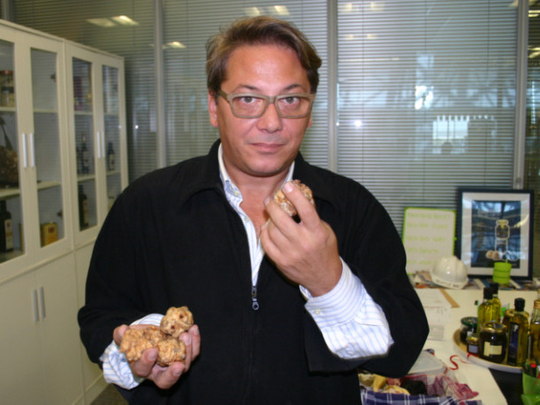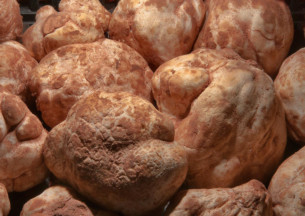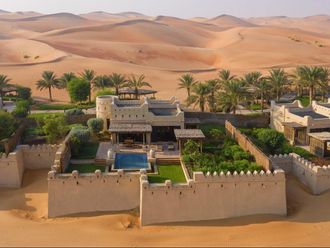
“You’ve got to know what you’re looking for,” says Massimo Vidoni, the Italian owner of Italtouch and Dubai’s truffle man with 25 years’ experience in trading top-quality European truffles.
Although he doesn’t normally deal in local desert truffles, he has searched for them in the UAE. “Where the desert has a greenish tinge you may find the early morning or late afternoon light casting tiny shadows on the sand,” he tells GN Focus. “It’s like lots of little black dots. These are the desert truffles creating little cracks as they break through the earth.”
The fungi look very different from the knotted and gnarled exotic black or white truffles he selects from known sources in Italy, France and Australia. They’re not nearly as pungent or gag-inducing either.
“Desert truffles should be cooked soon after harvesting. They are kind of rubbery but good if cooked slowly in a stew,” says Vidoni.
I try other avenues. Tomas Reger, a consultant and private Dubai-based chef, bought bags of them at the Deira Market two years ago from a Syrian guy, so he takes me there. At the market, everyone knows about the Syrian guy, but he hasn’t been seen in weeks.
Reger uses desert truffles to add texture. He stuffs the thin slices underneath the skin of a roast chicken and serves it with a caramelised truffle ragout. He uses truffle shavings as garnish too.
With help from the Egyptian Chefs Association in Cairo, I find a chef using desert truffles in the isolated Siwa Oasis, some 550 kilometres west of the capital. Atef Abdel Rehim Hamad, Executive Chef, Adrère Amellal Hotel, uses them at the ecolodge. “I buy terfez [desert truffles] from local hunters who gather them between Al Salloum near the Libyan border and Mersa Matruh in Egypt.
“Terfez appear during February and well into April, and also at other times depending on the arrival of the rains. Sometimes I also get truffles in November or December,” says Hamad.
The Egyptian chef uses them in desserts, risotto, chicken roulade, chicken creme brulee and chocolate mousse. “I use small quantities so as not to cause difficulties with digestion.
“They have high protein and low fat content and are a good source of energy. The nomads living in the Siwa desert also eat them to increase male fertility,” says Hamad.
Lightning strikes are said to be catalysts to their formation according to Bedouin legend — something Reza Fahlevi, Pastry Chef, Kempinski Residences & Suites in Doha, Qatar supports. “The number and size of the truffles depends on the strength and sequence of the rains.”
The Indonesian chef finds the flavour not as strong as the European varieties, so believes they can be used in greater volumes. “We use them on special occasions. They go well in souffles,” says Fahlevi.
I search in the UAE and Oman, but find nothing. My enlisted truffle scouts confirm occasional sightings of local people stopping by the roadsides and prowling among sparse shrubs, but nothing tangible comes to hand. A recent report from an excited truffle scout reporting a line of local people moving slowly in an arid area near Bab Al Shams revealed nothing but a refuse-collecting exercise.
Overcast days with considerable cloudiness are predicted for the UAE this month, so it could be the last chance to find any desert truffles out there. Maybe by then I would have found a nomadic Arab to assist me in my quest.









